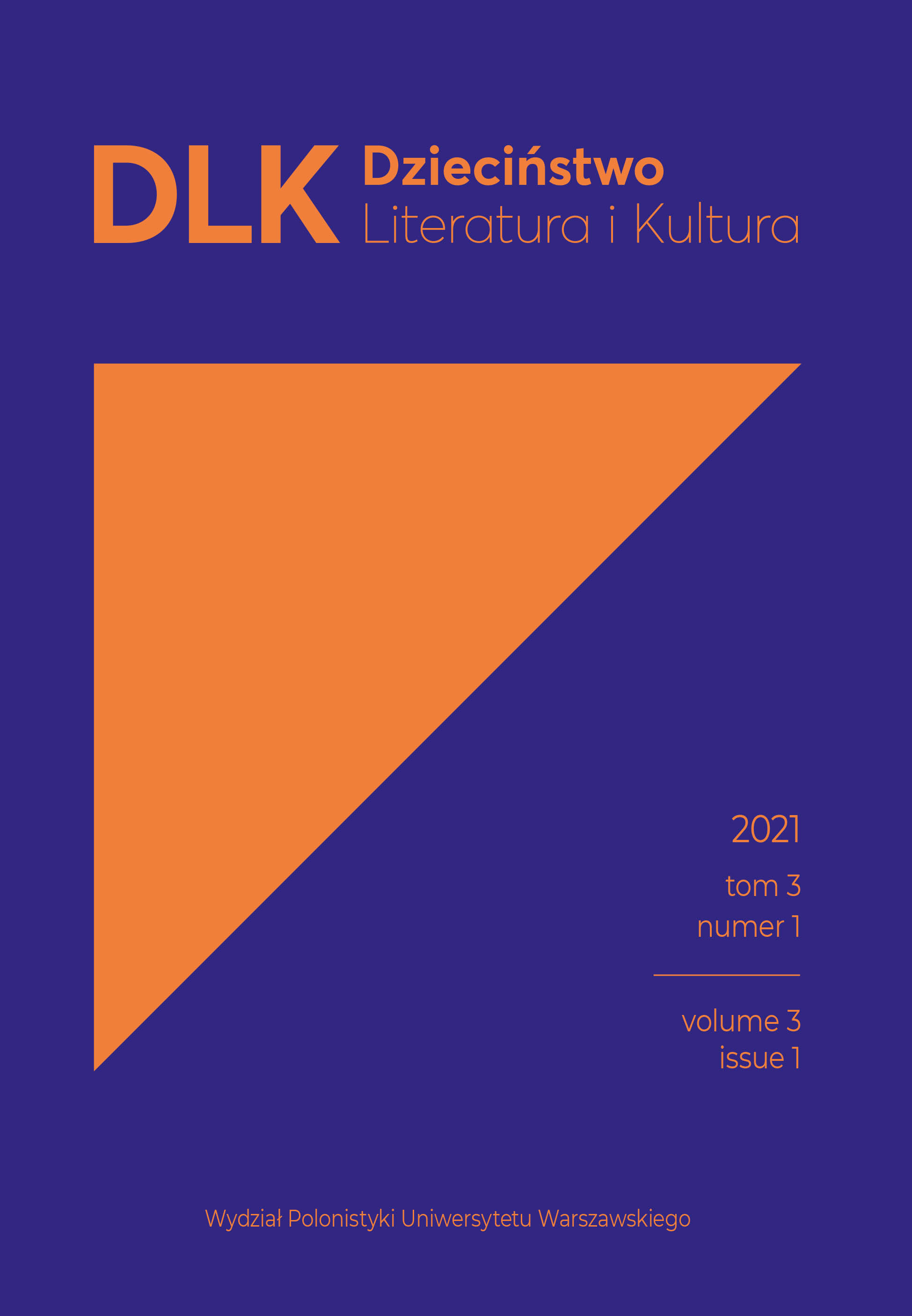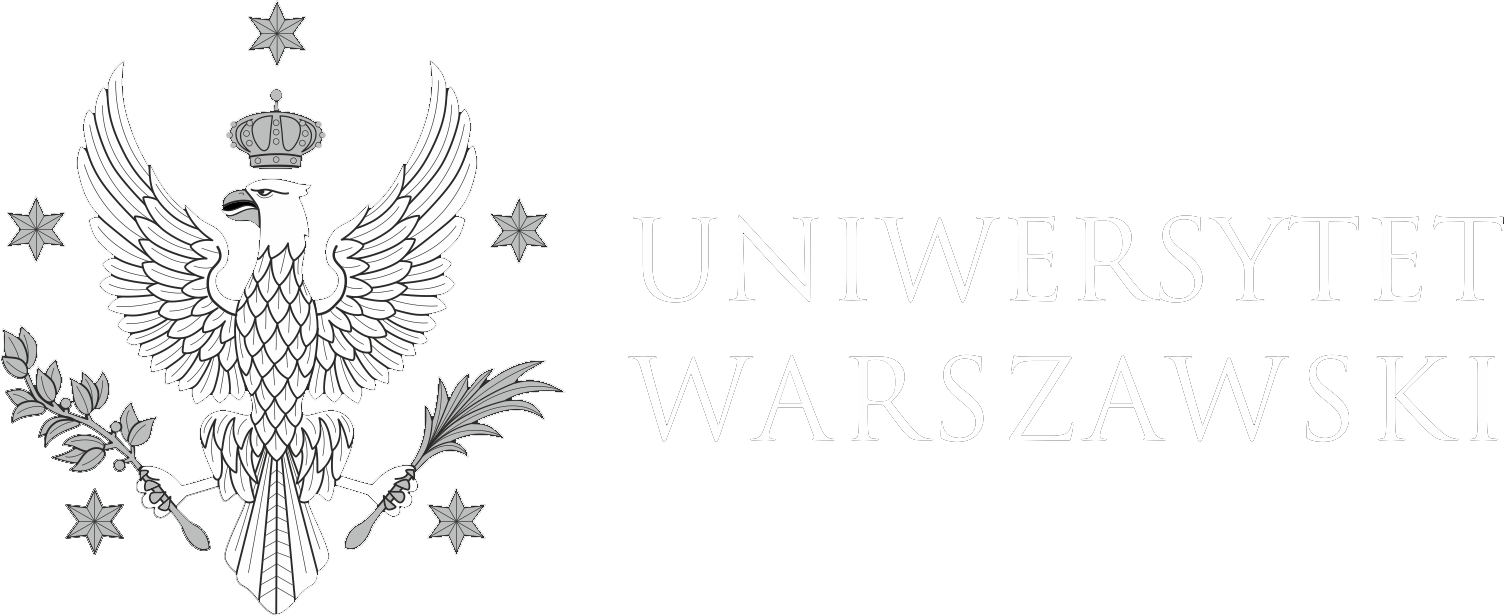Dimensions of Multiculturalism in Polish Drama and Theatre for Children
Abstract
The aim of the article is to introduce the topic of multiculturalism in Polish contemporary drama and theatre for children. Recent years have seen a growing interest in this theme, which is evidenced not only by the global number of texts, but also by the range of the topics covered, including death, the need for acceptance, and searching for one’s identity. The theme of cultural diversity receives an increasing attention from the authors. Drawing upon the selected examples of dramas written by the most popular Polish playwrights, the article analyses the ways of representing different cultures and finding otherness within Polish tradition. Theatre adaptations of above-mentioned dramas are an important context for consideration, and so do the references to dramas portraying war refugees.
Received: 02.11.2021
Accepted: 30.03.2022
Keywords
drama for children; childhood; theatre for children; Polish theatre; multiculturalism; multiculturality
Supporting Agencies
This article was supported by funds for the project Interdyscyplinarne badania nad teatrem i dramatem dla młodych odbiorców [Interdisciplinary Research on Theater and Drama for Young People] under the grant „Najlepsi z najlepszych! 4.0” [“Best of the Best! 4.0”] from the Polish Ministry of Education and Science.
References
Bryś, M. (2017, 22 marca). Omar – chłopiec taki jak ty. Dziennik Teatralny. Pobrane 30 października 2021 z: http://www.dziennikteatralny.pl/artykuly/omar-chlopiec-taki-jak-ty.html.
Cieślak, J. (2016, 28 września). Teatr dla dzieci uczy empatii [rozmowa z Tomaszem Manem]. Rzeczpospolita. Regiony. Pobrane 25 listopada 2019 z: https://regiony.rp.pl/archiwum/9789-teatr-dla-dzieci-uczy-empatii.
Golka, M. (2010). Imiona wielokulturowości. Muza.
Kaczorowski, T. (scen.), Retoruk, A. (reż.). (2017, 26 marca). Teraz tu jest nasz dom. Przedstawienie na żywo w Teatrze Maska, Rzeszów.
Kaleta, K. I. (2019). Tabu? Oswajanie wizerunku śmierci we współczesnym polskim teatrze dla dzieci. Maska, 41, 91–106.
Kaleta, K. I. (2020). Dziecko wobec konfliktów zbrojnych. Portrety wojny we współczesnych polskich dramatach dla młodych odbiorców. Maska, 46(3), 5–17.
Kazimierczak, S. (2014). Ony na widowni. Teatr, 7–8. Pobrane 1 września 2022 z: https://teatr-pismo.pl/4886-ony-na-widowni/.
Kazimierczak, S. (2017). Jeśli macie miejsce. Teatr, 9. Pobrane 9 września 2022 z: https://teatr-pismo.pl/6253-jesli-macie-miejsce/.
Maczuga, M. (2017). Demony nie lalki. E–teatr. Pobrane 10 listopada 2019 z: http:// www.e-teatr.pl/pl/artykuly/237289.html.
Man, T. (scen. i reż.). (2016, 25 września). Aya znaczy miłość. Przedstawienie na żywo w Teatrze Baj Pomorski, Toruń.
Matwiejczuk, K. (2018). Wnuczka Słońca. Nowe Sztuki dla Dzieci i Młodzieży, 44, 5–40.
Olkusz, P. (2014). Lalka, czyli animant [rozmowa z Haliną Waszkiel]. Teatr, 6. Pobrane 1 września 2022 z: https://teatr-pismo.pl/4830-lalka-czyli-animant/.
Pietrenko, A. (2017, 7 lutego). Zło jest w nas. Dziennik Teatralny Poznań. Pobrane 10 listopada 2019 z: http://www.dziennikteatralny.pl/artykuly/zlo-jest-w-nas.html.
Polska Agencja Prasowa. (2016, 17 listopada). Poznań. Prapremiera Opowieści z niepamięci. E-teatr. Pobrane 1 września 2022 z: https://e-teatr.pl/poznan-prapremiera-opowiesci-z-niepamieci-w-animacji-a227274.
Prześluga, M. (2013). Dziób w dziób. Pobrane 5 maja 2020 z: https://encyklopediateatru.pl/ksiazka/327/dziob-w-dziob.
Prześluga, M. (scen.), Paiva, D. (reż.). (2016, 23 listopada). Opowieści z niepamięci. Przedstawienie na żywo w Teatrze Animacji, Poznań.
Prześluga, M. (scen.), Young, J. (reż.). (2017, 4 lutego). Odlot. Przedstawienie na żywo w Teatrze Animacji, Poznań.
Rudziński, Z. (2012). Bilans. Teatr, 10. Pobrane 4 maja 2020 z: http://www.teatr-pismo.pl/przestrzenie-teatru/282/bilans/.
Sikorska-Miszczuk, M. (scen.), Majewska, M. (reż.). (2016, 28 maja). Yemaya – Królowa Mórz. Przedstawienie na żywo we Wrocławskim Teatrze Lalek, Wrocław.
Tyszka, J. (2016). Szaleństwa prasłowiańsko-brazylijsko-holendersko-polskie. Teatralny.pl. Pobrane 10 listopada 2019 z: http://teatralny.pl/recenzje/szalenstwa-praslowiansko-brazylijsko-holendersko-polskie,1769.html.
Urbańczyk, S. (1991). Dawni Słowianie. Wiara i kult. Zakład Narodowy im. Ossolińskich.
Waszkiel, H. (2012). Tańczący z lalkami. Teatr, 4. Pobrane 1 września 2022 z: https://teatr-pismo.pl/4115-tanczacy-z-lalkami/.
Waszkiel, H. (2017, 20 marca). Służę lalkom [rozmowa z Dudą Paivą]. E–teatr. Pobrane 10 listopada 2019 z: http://www.e-teatr.pl/pl/artykuly/238631.html.
Waszkiel, H. (2018). Nowa dramaturgia. Teatr Lalek, 3–4. Pobrane 4 maja 2020 z: http://www.e-teatr.pl/pl/artykuly/268467.html.
Jagiellonian University in Kraków Poland
https://orcid.org/0000-0001-8655-882X
Karolina I. Kaleta – MA, prepares a doctoral dissertation at the Doctoral School in the Humanities at the Jagiellonian University in Kraków (Poland) on the cult of the Saint Death in Mexico. Contact: karolina.i.kaleta@doctoral.uj.edu.pl.

This work is licensed under a Creative Commons Attribution 4.0 International License.
Open Access Policy
All articles presented on the pages of ”Dzieciństwo. Literatura i Kultura” are published in open access under a Creative Commons license - Attribution 4.0 International (CC BY 4.0). It means that:
- they can be made available and quoted under the condition of explicit and clear indication of the author/authors of the referenced text;
- you cannot use legal or technological means that would limit others in using the text under the terms of the license.
More information: https://creativecommons.org/licenses/by/4.0/





